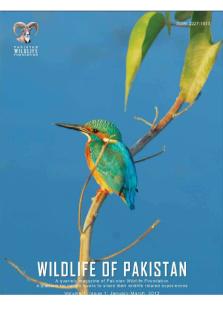Lujan v. Defenders of Wildlife ( Scotus, 1992) PDF

| Title | Lujan v. Defenders of Wildlife ( Scotus, 1992) |
|---|---|
| Course | Constitutional Law I |
| Institution | Touro College |
| Pages | 2 |
| File Size | 116.1 KB |
| File Type | |
| Total Downloads | 87 |
| Total Views | 144 |
Summary
Con Law II Notes from Class...
Description
Constitutional Law I Outline of Chapter Notes Lujan v. Defenders of Wildlife (SCOTUS, 1992) [Generalized Grievance] – Section 7(a)(2) of the Endangered Species Act of 1973 (ESA), as amended 16 U.S.C. § 1531 et seq., requires federal agencies to consult with the Secretary of the Interior or Commerce before undertaking actions that might jeopardize endangered or threatened species. The ESA provides that any person may initiate a civil suit on her own behalf to enjoin anyone, including governmental entities, from violating the ESA. In 1978, the Secretaries promulgated a joint regulation stating that the ESA consultation requirement extended to federal actions taken in foreign nations. A new joint regulation limiting the geographic scope to the United States and the high seas was proposed in 1983 and adopted in 1986. Organizations dedicated to the protection of wildlife (π) sued the Secretary of the Interior, Lujan (∆), seeking a declaratory judgment that the new regulation’s interpretation was wrong and an injunction requiring the Secretary to restore the initial interpretation of the geographic scope of the statute. The πs argued they were injured because a lack of consultation for governmental activities abroad increases the rate of extinction of endangered species. ∆ argued that there was a lack of standing. • Order: Sec of Interior! Fed Agencies ! foreign projects ! endangered species. • Standing: Standing under Article III of the Constitution contains three elements. (1) π must have suffered an actual injury. ▪ An injury in fact is “an invasion of a legally protected interest which is (a) concrete and particularized…and (b) actual or imminent.” (2) π must show a causal link between the harm and the conduct at issue. ▪ This means that the injury is “fairly traceable to the challenged action…and not the result of the independent action of some third party.” (3) It must be probable that a favorable verdict will redress the harm. • Rule: Under Article III of the Constitution, a party does not have standing to litigate a generalized grievance against the government in federal court if she suffered no personal injury other than the harm suffered by all citizens. • Holding: No standing. Reversed. o πs failed to show that threats to endangered species cause them imminent injury. Their theories regarding an ecosystem, animal, or vocational nexus
justifying standing for individuals who want to study, see, or work with such animals are too speculative. ▪ Court said having intentions go “go back” is not enough. Must be imminent. ▪ Scalia said that πs need concrete plans to go back (buy a plane ticket). o The πs also failed to show how a favorable outcome would redress their alleged injury. Conjecture regarding redressability is insufficient to support standing. o Additionally, the πs have not suffered a “procedural injury” that justifies standing under the citizen-suit provision of the ESA. The πs are suing over a generally available complaint about the government, not seeking to enforce a procedural requirement that protects a separate, concrete interest. • Takeaways: Allen and Lujan make clear that there are two other constitutional requirements for standing. The π must allege and prove the ∆ caused the harm, so that is likely that a favorable court decision will remedy the injury. Although both cases express that causation and redress are distinct constitutional requirements, they are obviously interrelated. • Class Notes: o Damages = harm already done; Injunction = prevent future harm. o If πs want to enjoin the secretary, they must know that it will make a change. o Causation and redressability are overlapped in the same issue. Without one, you won’t have the other....
Similar Free PDFs

Wildlife of odisha
- 26 Pages

MNCs Critics and Defenders
- 5 Pages

Wildlife of Pakistan Mar 2012
- 62 Pages

Wildlife Exam 1 Document
- 10 Pages

World Wildlife FUND guion
- 4 Pages

Fama French 1992
- 39 Pages

Adaptación MAPI (1992)
- 51 Pages

CASE Mohini Jain 1992
- 5 Pages

Andre and Velasquez 1992
- 3 Pages

Conrad 1992 - notes
- 26 Pages
Popular Institutions
- Tinajero National High School - Annex
- Politeknik Caltex Riau
- Yokohama City University
- SGT University
- University of Al-Qadisiyah
- Divine Word College of Vigan
- Techniek College Rotterdam
- Universidade de Santiago
- Universiti Teknologi MARA Cawangan Johor Kampus Pasir Gudang
- Poltekkes Kemenkes Yogyakarta
- Baguio City National High School
- Colegio san marcos
- preparatoria uno
- Centro de Bachillerato Tecnológico Industrial y de Servicios No. 107
- Dalian Maritime University
- Quang Trung Secondary School
- Colegio Tecnológico en Informática
- Corporación Regional de Educación Superior
- Grupo CEDVA
- Dar Al Uloom University
- Centro de Estudios Preuniversitarios de la Universidad Nacional de Ingeniería
- 上智大学
- Aakash International School, Nuna Majara
- San Felipe Neri Catholic School
- Kang Chiao International School - New Taipei City
- Misamis Occidental National High School
- Institución Educativa Escuela Normal Juan Ladrilleros
- Kolehiyo ng Pantukan
- Batanes State College
- Instituto Continental
- Sekolah Menengah Kejuruan Kesehatan Kaltara (Tarakan)
- Colegio de La Inmaculada Concepcion - Cebu





